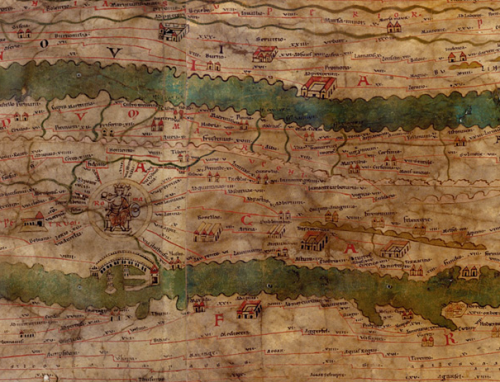Historic maps give us both an insight into the past but also a template from which we develop many of our modern techniques. The Peutinger Table is an historic Roman map that at first sight is simply a map of Roman settlements, spas and topography. It depicts the Roman transportation network and is perhaps the earliest form of road atlas produced though in fact it was produced at a time when Romans needed to be reassured that their empire was both impressive and strong. In many ways it was a propagandist map that was designed to show the vastness of a perhaps ailing empire.
Named after Konrad Peutinger, an economist and historian, who inherited the map in 1508 the map is actually a copy of a lost Roman original that dates to around 300 A.D. It’s impressive in its size and scope being eleven sections wide and nearly 23ft in length. The scope of the map takes readers from the British Isles to India across the Roman Empire but because the map is only 1 foot tall much of the north-south detail is hugely compressed. Around 60,000 miles of roads are shown with distances between cities shown.
The sheer size of the map makes it interesting in design terms but whether the original intent was genuinely for showing transportation networks or simply to boast of the scale of the Roman Empire, the map is impressive.
You can view the entire map as a seamless whole at Richard Talbert’s web site here.


